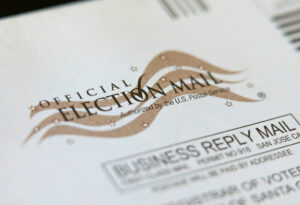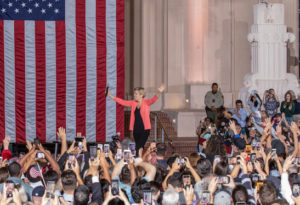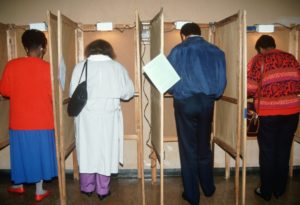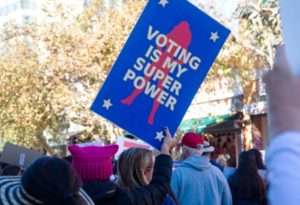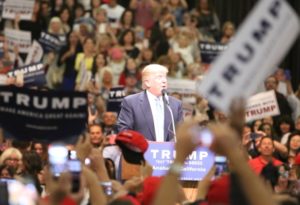Posts Tagged: primary election
News
California Rep. Kevin McCarthy’s stunning announcement that he will resign from Congress before his term ends has sent the state’s political class and those who cover it into an uproar. The possibilities of who might seek to replace the former House Speaker are numerous, and names of conceivable candidates began flying seemingly moments after his announcement became public. But for now, McCarthy still holds the cards for how exactly that all goes down.
Analysis
In counties like Los Angeles, we see almost no increase in Latino share of votes cast from 2014-2022, and even drops in electoral impact of older Latinos.
News
Asian American Pacific Islanders, or AAPI, is a rising political force, but it has yet to flex its full muscle. About 16 percent of the nation’s 22 million people identified as Asian and Pacific Islander Americans live in California, according to the latest census, but the community’s elected state officeholder are less than their numbers suggest.
News
Vote-by-mail ballots have been sent to all registered voters in Amador County, with Solano reporting they will be mailing ballots today, while Los Angeles, San Francisco and San Diego counties — and maybe others – will be mailing next week. These counties are getting ahead of the Oct. 5 deadline for California counties to mail ballots. In other states, meanwhile, voting has been taking place for weeks.
News
Despite the several avenues for nonpartisans to obtain a presidential primary ballot, we now have the data from all 58 counties. Remarkably, only 9% of California’s growing independent and vote-by-mail population have successfully obtained a partisan presidential primary ballot. For 91% of nonpartisan voters, there is no presidential race on the ballot they received in the mail.
News
For the past year, Capitol Weekly has conducted over 10,000 surveys of likely Democratic primary election voters. These surveys have emailed Democratic and nonpartisan voters each month, asking them to complete a survey, and tracked their responses back to their voter registration to allow us to analyze candidate support by ethnicity, age, partisanship, and other factors.
News
About 4 million-plus independent voters who are eligible to vote in the Democratic Primary will see no presidential candidates at all on their ballots. What?? Yes. In March 2020, in one of the hottest primary elections in recent history, where California is set to play a more important role than usual as the largest state on Super Tuesday, there will be approximately 3.5 million voters receiving blank presidential ballots.
News
One constant in California elections is change. In the past 20 years, we’ve seen changes to when the primary is held, then changed back, then back again. We’ve seen an open primary, then another version of the open primary. We shook up the Legislature with term limits, then imposed different term limits. We have moved increasingly to vote by mail, shifting the timeline of our elections.
News
In the 2016 and 2018 election cycles, Capitol Weekly conducted several surveys for the primary and general elections. We examined voters’ opinions on the contests for president, U.S. Senate, governor, Legislature and Congress, as well as on ballot measureas before California voters. In total, we heard from over 100,000 voters, providing us with a significant dataset of voters and their preferences.
News
With the coming 2020 Presidential primary, all eyes are on the plethora of Democratic candidates joining the fray, and the big possibility that an early California contest could catapult one or more contenders past Super Tuesday.
With all this activity on the left, few are looking at what could be going on with the Republican side of the ticket. Could there be something in California for a Republican challenger to President Donald Trump?


